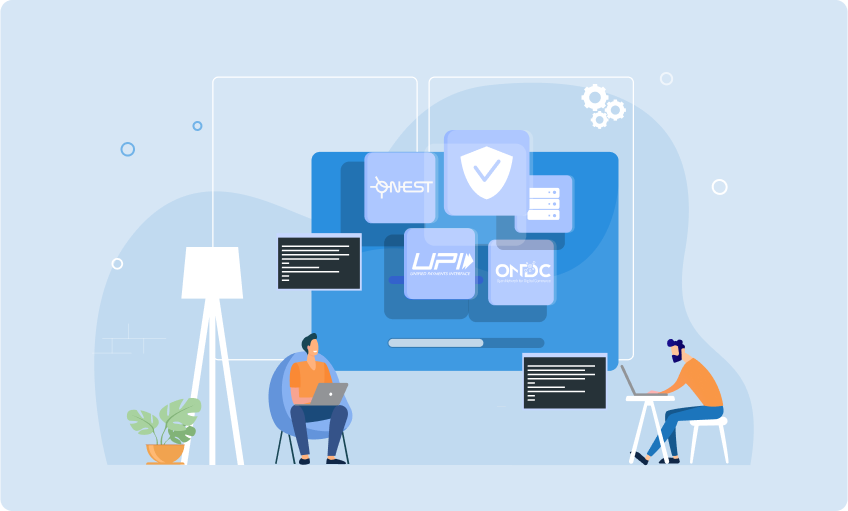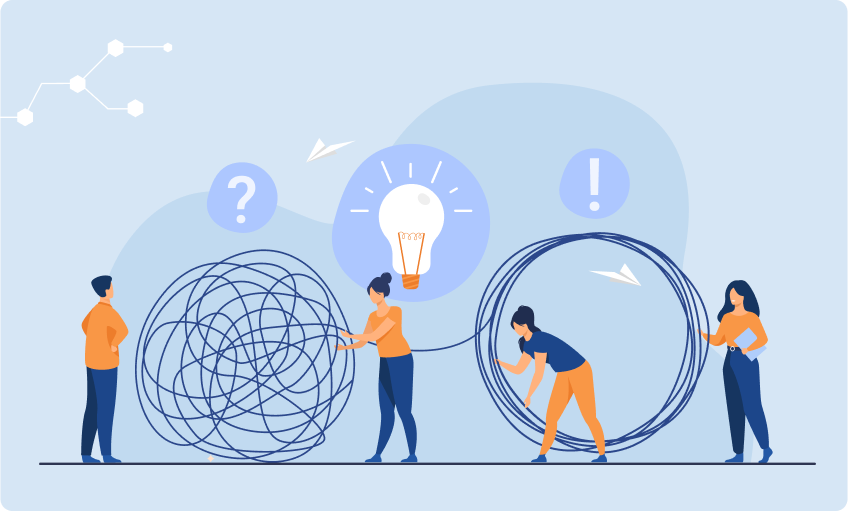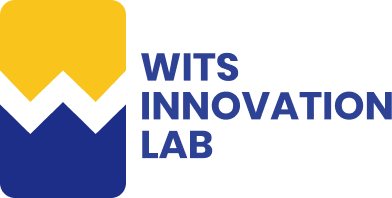Published - 2 years ago | 6 min read
Digital Public Infrastructure (DPI): Driving India Towards a $1 Trillion Digital Economy
India is on the cusp of a digital transformation driven by a set of strong digital public goods: Digital Public Infrastructures (DPIs). These infrastructures, including the UPI, ONDC, and ONEST, are in the process of bringing the country closer to achieving a $1 trillion digital economy by 2030. This change is not only expected to increase the efficiency of citizens but also to improve the social and financial inclusion of the entire country.
The Rise of Digital Public Infrastructure

DPIs are based on establishing initial digital structures that act as a framework for providing critical services to the population. These systems are intended to be open, modular, and accessible, guaranteeing they connect even the most marginalized sectors of society.
The Nasscom and Arthur D Little joint report also highlighted that DPIs such as Aadhaar, UPI, and FASTag are already at a mature stage in India. These systems have seen exponential uptake, and Aadhaar alone has given a unique identity to over 1.3 billion citizens, UPI is changing the face of digital payments, and FASTag is making toll payments easier across the country.
The Nasscom and Arthur D Little joint report also highlighted that DPIs such as Aadhaar, UPI, and FASTag are already at a mature stage in India. These systems have seen exponential uptake, and Aadhaar alone has given a unique identity to over 1.3 billion citizens, UPI is changing the face of digital payments, and FASTag is making toll payments easier across the country.
1. UPI: A Catalyst for Financial Inclusion
The Unified Payments Interface (UPI) has been a game-changer in digital payments. Launched by the National Payments Corporation of India (NPCI), UPI has simplified transactions by enabling instant transfers between bank accounts using mobile devices. Its user-friendly interface and the convenience of seamless transactions have led to its widespread adoption.
By facilitating millions of transactions daily, UPI has driven financial inclusion and contributed significantly to the economy. It has enabled small businesses and individuals to participate in the digital economy, enhancing productivity and boosting economic growth. As of 2022, UPI has generated an economic value of $31.8 billion, which is approximately 0.9% of India's GDP. By 2030, this value is projected to increase to 2.9%-4.2% of GDP.
By facilitating millions of transactions daily, UPI has driven financial inclusion and contributed significantly to the economy. It has enabled small businesses and individuals to participate in the digital economy, enhancing productivity and boosting economic growth. As of 2022, UPI has generated an economic value of $31.8 billion, which is approximately 0.9% of India's GDP. By 2030, this value is projected to increase to 2.9%-4.2% of GDP.
2. ONDC: Revolutionizing Digital Commerce
The Open Network for Digital Commerce (ONDC) represents a groundbreaking initiative to democratize digital commerce. Unlike traditional platforms, ONDC operates as a network, connecting sellers with buyers without acting as intermediaries. This approach not only enhances consumer choice but also fosters competition and entrepreneurship.
ONDC is poised to transform the retail sector by facilitating seamless transactions across various products and services. It connects sellers directly with buyers, enabling small businesses to tap into larger markets and consumers to access diverse offerings. This network model ensures that the benefits of digital commerce are distributed more equitably, promoting inclusive growth.
One of ONDC's key features is its commitment to open standards and interoperability. This ensures that businesses of all sizes, including small and medium-sized enterprises (SMEs), can easily integrate into the network. By lowering the barriers to entry, ONDC is creating a level playing field where even the smallest vendors can compete with larger players.
The impact of ONDC extends beyond just economic benefits. Promoting a more inclusive digital economy helps bridge the urban-rural divide. Rural artisans, farmers, and small-scale entrepreneurs can now reach a national and global customer base, enhancing their income and living standards. This democratization of digital commerce is a significant step towards achieving the goal of inclusive growth and economic empowerment.
ONDC also aligns with the government's vision of a self-reliant India (Aatmanirbhar Bharat) by boosting domestic consumption and reducing dependence on foreign e-commerce platforms. The ONDC network empowers Indian businesses to thrive in a fair and competitive global market.
ONDC is poised to transform the retail sector by facilitating seamless transactions across various products and services. It connects sellers directly with buyers, enabling small businesses to tap into larger markets and consumers to access diverse offerings. This network model ensures that the benefits of digital commerce are distributed more equitably, promoting inclusive growth.
One of ONDC's key features is its commitment to open standards and interoperability. This ensures that businesses of all sizes, including small and medium-sized enterprises (SMEs), can easily integrate into the network. By lowering the barriers to entry, ONDC is creating a level playing field where even the smallest vendors can compete with larger players.
The impact of ONDC extends beyond just economic benefits. Promoting a more inclusive digital economy helps bridge the urban-rural divide. Rural artisans, farmers, and small-scale entrepreneurs can now reach a national and global customer base, enhancing their income and living standards. This democratization of digital commerce is a significant step towards achieving the goal of inclusive growth and economic empowerment.
ONDC also aligns with the government's vision of a self-reliant India (Aatmanirbhar Bharat) by boosting domestic consumption and reducing dependence on foreign e-commerce platforms. The ONDC network empowers Indian businesses to thrive in a fair and competitive global market.
3. ONEST: Open Network for Education and Skilling Transformations
ONEST is all about reformulating education and training. The primary goal of ONEST is to establish and popularize a fair, open, and decentralized network for education and skills development that will enable everyone and organizations to flourish. With ONEST, learners and opportunity seekers are connected to learning and livelihood opportunities as a unified system, hence dismantling the present system of fragmented categories.
As the name suggests, ONEST has the noble objective of assimilating educators and content developers with suppliers, seekers, and employers. Such an approach creates linkages that promote the potential development of business and social partnerships focusing on equality in providing education and skills to promote employability.
Key Categories within ONEST:
Learning Experiences: Availability of products such as food and beverages, range of courses, and training options.
Financial Support: Scholarships and grants, federal aid, institutional aid, state aid.
Work Opportunities: Campus recruiting, general job postings, and independent contract work for entry-level to experienced employees.
Expert Connect: Mentee; major areas of involvement: mentorship, volunteering, and tutoring.
ONEST strives to increase equitable access to educational and skills development resources to eliminate the deficiency. By making this a priority, the program focuses on the concept of sustainable livelihoods to guarantee everyone an opportunity to attain their goals in life.
As the name suggests, ONEST has the noble objective of assimilating educators and content developers with suppliers, seekers, and employers. Such an approach creates linkages that promote the potential development of business and social partnerships focusing on equality in providing education and skills to promote employability.
Key Categories within ONEST:
Learning Experiences: Availability of products such as food and beverages, range of courses, and training options.
Financial Support: Scholarships and grants, federal aid, institutional aid, state aid.
Work Opportunities: Campus recruiting, general job postings, and independent contract work for entry-level to experienced employees.
Expert Connect: Mentee; major areas of involvement: mentorship, volunteering, and tutoring.
ONEST strives to increase equitable access to educational and skills development resources to eliminate the deficiency. By making this a priority, the program focuses on the concept of sustainable livelihoods to guarantee everyone an opportunity to attain their goals in life.
The Broader Impact of DPIs
The benefits of DPIs are not restricted to specific schemes such as UPI, ONDC, or ONEST. Altogether, these infrastructures are causing a new industrial revolution in the Indian economy. They help create the requisite government services and platforms on which markets are built in public and private spheres.
Brajesh Singh of Arthur D Little India observed that DPIs in a mature stage have already created value in the region, estimated at 0. 9% of India's GDP. This contribution is projected to increase to 2 by 2030. 9%- 4. 2% of GDP. This growth has been boosted by the rising use of digital technologies and DPI applications in different industries.
Brajesh Singh of Arthur D Little India observed that DPIs in a mature stage have already created value in the region, estimated at 0. 9% of India's GDP. This contribution is projected to increase to 2 by 2030. 9%- 4. 2% of GDP. This growth has been boosted by the rising use of digital technologies and DPI applications in different industries.
Challenges and Opportunities

However, some challenges still need to be resolved to unlock the full value of DPIs. One major issue is the relative isolation of different constituencies. To address this issue, an effort should be made to improve the integration and communication between various organizations.
Another difficulty arises from the fact that DPIs can be informed by limited real-time data. Accurate and current information is central to decision-making and service provision. Features such as broad language support will improve usability by better-accommodating users in their desired languages.
The Nasscom and Arthur D Little's report also strongly supports policy initiatives and regulatory certainty. Existing [digital ecosystems] must be sustained and advanced through the creation of dedicated task forces within government institutions and partnerships with large corporations and startups.
Another difficulty arises from the fact that DPIs can be informed by limited real-time data. Accurate and current information is central to decision-making and service provision. Features such as broad language support will improve usability by better-accommodating users in their desired languages.
The Nasscom and Arthur D Little's report also strongly supports policy initiatives and regulatory certainty. Existing [digital ecosystems] must be sustained and advanced through the creation of dedicated task forces within government institutions and partnerships with large corporations and startups.
The Future of DPIs in India
DPIs are expected to have a promising future in India with tremendous prospects for future expansion. Current digital assets are primarily expected to transform, integrating blockchain and the Metaverse into existing businesses to provide enhanced user experiences. For instance, Aadhaar is expected to increase its applicability across more services and applications, thus increasing its effectiveness.
The incremental value DPIs add will be largely driven by initiatives such as the Ayushmann Bharat Digital Mission (ABDM), which pursues the goal of improving the health of citizens and will positively impact labor productivity. Hence, ONDC is expected to enhance retail expenditures and thereby facilitate economic development.
The incremental value DPIs add will be largely driven by initiatives such as the Ayushmann Bharat Digital Mission (ABDM), which pursues the goal of improving the health of citizens and will positively impact labor productivity. Hence, ONDC is expected to enhance retail expenditures and thereby facilitate economic development.
International Significance of India's DPIs
The success story of India in developing and implementing DPIs has not remained unnoticed internationally. Many nations and international bodies, such as the IMF or the G20, have supported India's DPI model because of its capability to foster socio-economic development.
India's experience in harnessing technology to accelerate equitable development is now being copied by other developing countries. The robustness, reliability, safety, and security principles exhibited in India's DPIs have provided a standard model to the rest of the world.
India's experience in harnessing technology to accelerate equitable development is now being copied by other developing countries. The robustness, reliability, safety, and security principles exhibited in India's DPIs have provided a standard model to the rest of the world.
Conclusion
UPI, ONDC, ONEST, and other DPIs are crucial to moving India towards becoming a digital economy hub. These DPIs will help the country achieve a $1 trillion digital economy by 2030 by increasing efficiency, promoting inclusiveness, and driving economic growth. The path forward requires solving problems, encouraging creativity and progress, and expanding the impact of digital technologies in pursuit of a better life for everyone.

Written by / Author
Manasi Maheshwari
Found this useful? Share With
Top blogs
Most Read Blogs
Wits Innovation Lab is where creativity and innovation flourish. We provide the tools you need to come up with innovative solutions for today's businesses, big or small.
© 2025 Wits Innovation Lab, All rights reserved
Crafted in-house by WIL’s talented minds

